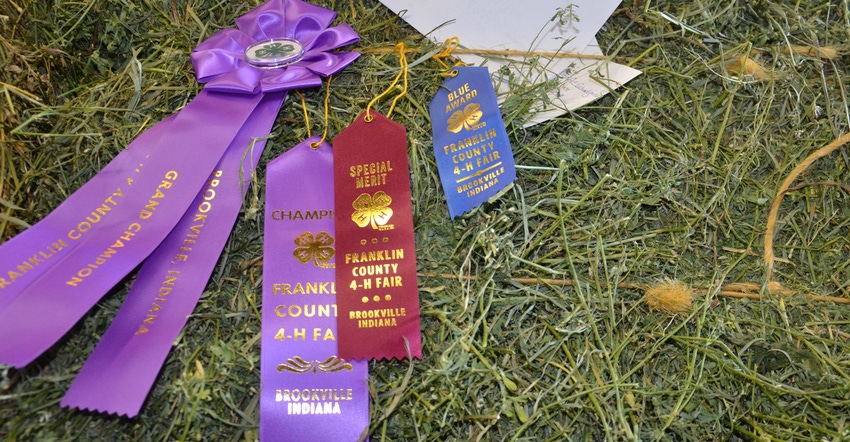August 6, 2018

Let me preface this by reminding you this a blog — it’s strictly my opinion. You’ll have your own opinion, and I welcome your comments as long as we can have a civil conversation. This cautionary reminder is necessary because for over 100 years, the 4-H program has served Indiana, and people are passionate about 4-H. There are legitimate differences in opinion about what the future of 4-H will and should look like.
I was a 4-H member in the 1960s, showing pigs and dairy cattle, digging cornstalks, and exhibiting alfalfa hay. I also tried my hand at photography and electricity.
My wife, Carla, exhibited many projects, including beef cattle. Our four children were in 4-H, with our career as 4-H parents spread over 17 years. We’ve been 4-H leaders, too. Today I judge at 10 to 12 county fairs per year, in projects ranging from crops and gardening to photography to poster projects to shooting sports.
A definite trend has emerged over the past four years. The number of projects overall in many counties is dwindling, sometimes dramatically. There are fewer each year. A county that once had 30 or more exhibits each of corn, soybeans and hay this year had half those numbers. Most concerning was that there were few beginners exhibiting.
Possible causes
Several Extension educators have expressed these same concerns. At one county fair, I drove more than 60 miles one way and waited three hours for less than 20 kids to bring in exhibits, with no one bringing in an exhibit in the last hour. Counties are different and have their strong projects and lower-interest projects, based on interests of the community. Any effort to use a cookie-cutter approach and one-size-fits-all programming ought to be re-examined.
The most common excuse for this decline in interest? Kids have too many other choices today: soccer, basketball, cheerleading, travel teams. True, but they had those choices 10 years ago, too.
Another theory: Younger farm families aren’t replacing older families whose kids have completed 4-H. That may be valid to some extent.
Here are a couple reasons few people want to discuss. First, Purdue University and the 4-H program went to computerized enrollment and computerized entries a few years ago. From the write-ins that still happen at some fairs, it appears the transition isn’t over. Word on the grounds is that some parents decided it’s just too much hassle. Some rural counties like Owen County don’t have internet access everywhere.
Finally, are kids getting the 4-H experience they once did? Are there still club meetings? Do they attend? Are record sheets meaningful? Or are kids just completing projects for the fair? How fulfilling is it if your only 4-H interaction is the fair? Are we still concerned about educating kids, or just about teaching them to jump through hoops and meet arbitrary rules?
It’s not a cheap venture either. We personally spent more than $100 on our youngest daughter’s diorama one year. Was the father-daughter bonding worth it? Maybe. But perhaps not everyone can afford such an investment.
It’s not fair to offer these observations without offering solutions. I have ideas — mostly borrowed from others. Stay tuned next week.
And we haven’t even mentioned livestock!
Here’s my bottom line: For 4-H to survive 10, 20 or more years down the road — and be vibrant — we need change. There must be a revival of passion for traditional 4-H.
Comments? Email [email protected].
You May Also Like




